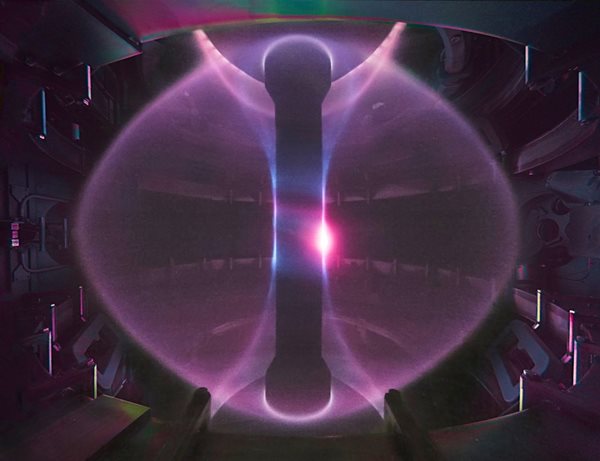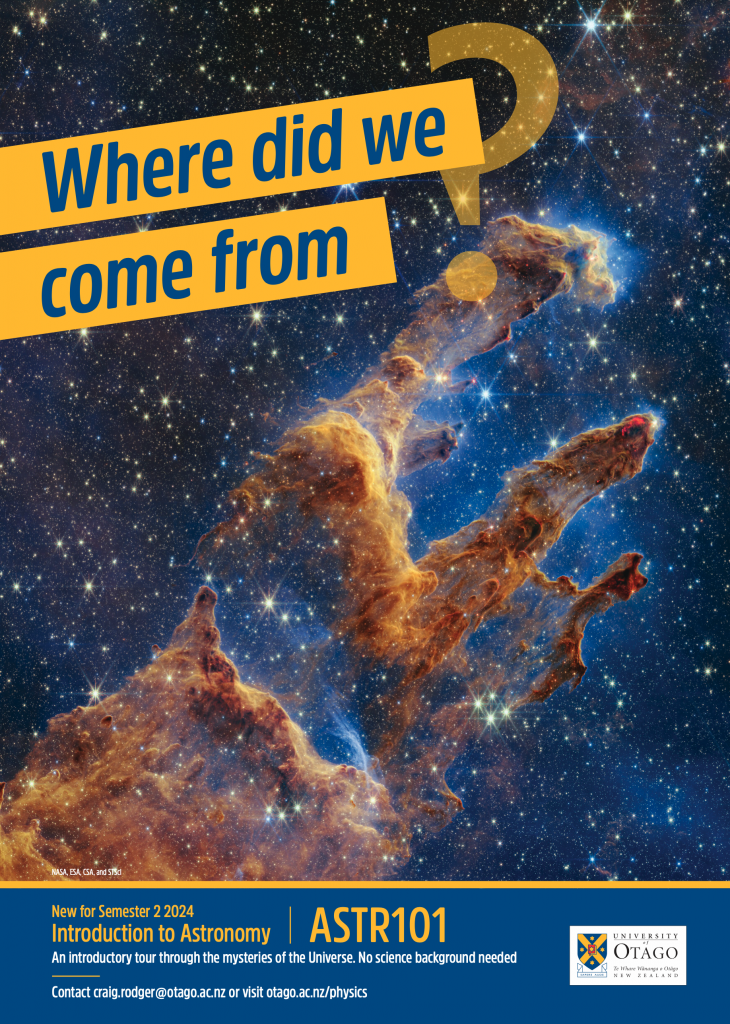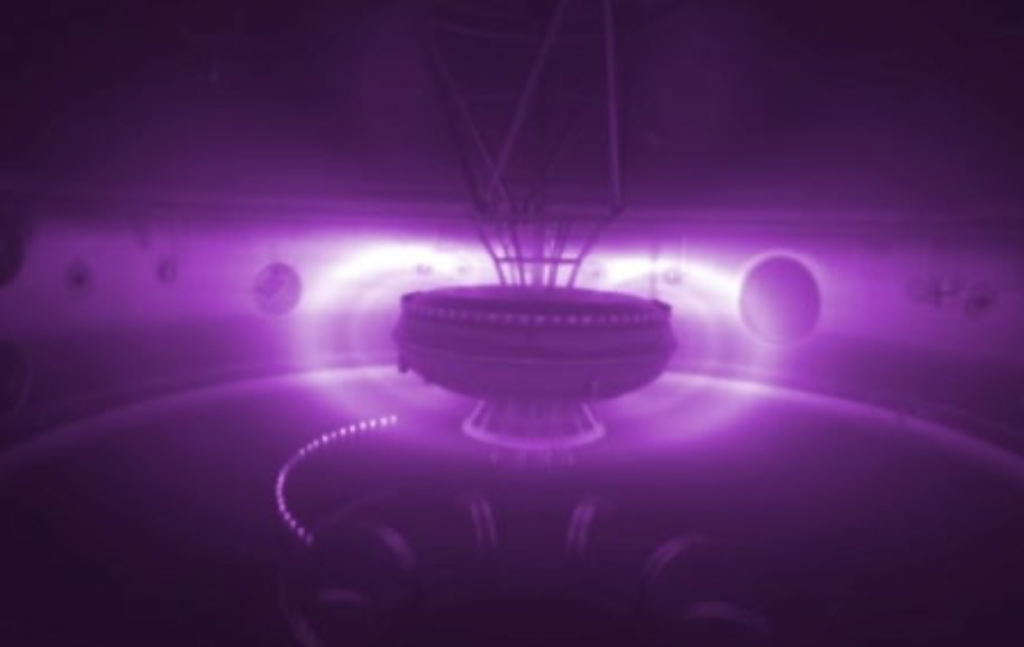What started as an idea in 2014 by Dr Tim Molteno to develop the world’s smallest radio telescope in his Department of Physics laboratory at the University of Otago, is now being rolled out across eight partner nations of the Square Kilometre Array project in Southern Africa! The open-source, low-cost radio telescope called the ‘Transient Array Radio Telescope’ has been chosen by the South African Radio Astronomy Observatory as the ideal technology to build radio astronomy capacity on the continent.
History of the Master Equation
Crispin Gardiner
Honorary Professor, University of Otago
 Master equations, both classical and quantum, have been in use since at least 1910 as the basis for the description of random events in physics, and my career in Quantum Optics since the 1970s has been built on the foundation of the master equation description of quantum optics.
Master equations, both classical and quantum, have been in use since at least 1910 as the basis for the description of random events in physics, and my career in Quantum Optics since the 1970s has been built on the foundation of the master equation description of quantum optics.
But why is it called the master equation, and who is responsible for its development into one of the major tools in the physics of randomness? And how far can we trust the master equation?
I will track back the origin of the idea, and its importance in physics to the very beginning, with some unexpected results. I will cover kinetic theory, quantum optics, and the mathematics of stochastic processes, both quantum and classical up to the end of the 20th century. At the same time, I will give some particular attention to the conditions necessary for the validity of the Master Equation.
Wednesday 8 November, 3.00pm
Room 314, Science III Building
Dr Toby Adkins
Post Doctoral Fellow, University of Otago

The ultimate goal of the global fusion programme is to harness a self-sustained nuclear fusion reaction as a commercially viable source of clean energy. At the high pressures required for nuclear fusion, the fuel becomes a plasma – an electromagnetically interacting gas of charged electrons and ions – which is unable to be contained by normal materials. Magnetic-confinement fusion proposes to use large external electromagnetic coils to generate a series of nested magnetic field “surfaces” that wrap around the device and help confine the plasma. In this talk, I will introduce the general concepts underlying magnetic-confinement fusion and review some of the fundamental physics challenges it faces, including magnetohydrodynamical stability, Neoclassical transport, and microscale turbulence. Within the latter strand, I show that the scaling of the turbulent heat flux with parameters of the plasma equilibrium can be constrained by an underlying symmetry (scale invariance) of the governing equations, a prediction that is borne out by numerical simulations. Finally, I will discuss the outlook of the global nuclear fusion programme in an effort to convince you that fusion is much closer than “thirty vears away”. This talk is appropriate for anyone with a basic physics background.
Friday 13th October, 12.00pm,
Room 314, Science III Building
Introduction to Astronomy (ASTR101)
 We’re excited to share that we’ve moved the long-running physics paper “Introduction to Astronomy” from summer school to semester 2 for 2024. The paper, now coded ASTR 101 Introduction to Astronomy, covers the history and cutting edge of astronomy and astrophysics, including ancient astronomy and indigenous knowledge, the birth and death of stars, planetary systems, galaxies and cosmology, and searches for extraterrestrial life.
We’re excited to share that we’ve moved the long-running physics paper “Introduction to Astronomy” from summer school to semester 2 for 2024. The paper, now coded ASTR 101 Introduction to Astronomy, covers the history and cutting edge of astronomy and astrophysics, including ancient astronomy and indigenous knowledge, the birth and death of stars, planetary systems, galaxies and cosmology, and searches for extraterrestrial life.
The paper is designed to be accessible to anyone, including non-science majors, and involves almost no maths. We hope that this move into semester 2 will make it more accessible for interested students to learn about the wonders of the Universe!
2023 Energy Education Trust Scholarships


Congratulations to the two Otago Energy students for their success in this year’s Energy Education Trust Undergraduate Scholarship round!
The EETNZ Scholarships are available to students in year three or four pursuing a full-time bachelor’s degree in science, economics or engineering and related fields but with an interest in energy as it relates to the specific needs of Aotearoa New Zealand. More information can be found at www.eetnz.org.nz.
Dr Maren Richter
Department of Physics University of Otago

Each winter the ocean in McMurdo Sound, Antarctica freezes to form sea ice. I will present results from my PhD studying the effect of atmosphere and ocean on the thickness of landfast sea-ice. Measurements were taken between 1986–2022 which provided a baseline against which I examined the variation in landfast sea-ice thickness between years. I will highlight the atmosphere and ocean properties most likely to influence landfast sea-ice thickness in McMurdo Sound. There is no main driver of fast-ice thickness in McMurdo Sound, but I found that in years when the air is colder, (southerly) wind speed is higher, and there are less southerly storms, the landfast sea ice is thicker. There remains a need for a future event-based analysis, especially around extreme storm events driving winter landfast sea- ice break up and persistence. The talk will give a general overview of Antarctic sea ice and McMurdo Sound in particular, as well as fieldwork undertaken during my PhD.
12.00pm, Wednesday 23 August 2023
Room 314, Science III Building
Otago BAppSc(Energy) graduate Yoyo Wu working on hydrogen trucking at HW Richardson talks about their first hydrogen conversion!
Dr Ratu Mataira
OpenStar Technologies Wellington
Fusion energy is a hot topic at the moment and does not need any introduction. Useful fusion energy has been 30 years away for the past 80 years, and although recent achievements have been advertised as “breakthroughs”, the reality is that there are still a lot of technical challenges to overcome with the current fusion devices before we are likely to see them providing electricity to the grid.
Inspired by the dipole plasma observed around Jupiter, a joint MIT-Columbia experiment was born in the early 2000’s to test a concept known as the levitated dipole reactor (LDR). The LDR boasts a wide range of plasma performance improvements over the conventional approaches to fusion and represents the first commercially relevant fusion concept that can be achieved with current technology.
Why is Antarctic sea ice vanishing?

Sea Ice has been diminishing at an alarming rate, but what is the science? Associate Professor Inga Smith and NIWA’s Dr Natalie Robinson discuss sea ice Physics on Radio NZ, The Detail NZ podcast: “Why is Antarctic sea ice vanishing?”.
Beverly Clock on Seven Sharp

The Beverly clock was featured on Seven Sharp – The clock that doesn’t stop!
The Beverly clock on the 3rd floor of the Physics Department is powered by atmospheric pressure changes and has run continuously despite not being manually wound since its construction by Arthur Beverly in 1864. As one of the longest running experiments in the world, it predates even the founding of the University of Otago in 1869.


